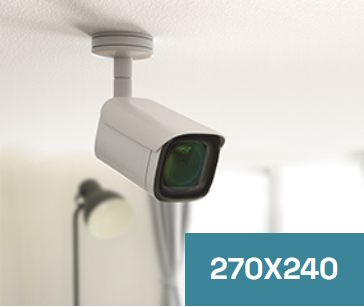The Retail Fortress – Loss Prevention Strategies That Work
In the competitive world of retail, loss prevention isn’t just a security issue — it’s a business imperative. Whether you’re running a single boutique or managing a chain of department stores, every dollar lost to theft, fraud, or operational inefficiencies directly impacts your bottom line. Building a strong loss prevention strategy means taking a proactive, layered approach to protect assets, employees, and customers alike.
Fortunately, advancements in technology particularly CCTV monitoring and video analytics — have revolutionized how businesses approach loss prevention. These tools are more than just reactive measures; they enable retailers to predict, prevent, and respond to threats in real time.
The foundation of any good loss prevention plan starts with assessing vulnerabilities. This includes reviewing store layout, employee workflows, checkout procedures, inventory management systems, and of course, current surveillance practices. Identifying where losses are occurring, whether through shoplifting, internal theft, vendor fraud, or administrative errors, provides the insight needed to implement effective countermeasures.
One of the most effective first-line defenses is the installation of a comprehensive CCTV monitoring system. Cameras strategically placed throughout the store not only deter theft but also help identify suspicious activity. When combined with video analytics, these systems can track behavior patterns, detect anomalies, and even alert staff to potential threats before they escalate.
Video analytics takes traditional surveillance to the next level. This AI-powered tool can recognize repeated customer visits, flag unusual motion after hours, or monitor customer density in certain zones. For instance, if someone repeatedly lingers in a high-value merchandise area or attempts to tamper with packaging, the system can send a real-time alert to managers or security personnel. These analytics offer a level of insight that simply wasn’t possible with human observation alone.
However, technology is only one part of the equation. A successful loss prevention strategy also hinges on strong internal processes and staff involvement. Employee training is essential — not only on how to spot suspicious behavior, but also on how to use systems like CCTV monitoring effectively. Staff should be empowered to report concerns without fear and know how to react appropriately in the event of a security incident.
Creating clear protocols around cash handling, refunds, voids, and stockroom access can further reduce opportunities for internal theft. These protocols should be enforced consistently and supported by technological verification. For example, integrating surveillance solutions with your point-of-sale system allows you to cross-reference transactions with video footage to identify discrepancies and patterns of fraud.
Beyond the storefront, loss prevention strategies should extend into your supply chain. Theft and loss can occur during shipment, delivery, or even during storage. By placing CCTV monitoring systems at loading docks, warehouses, and delivery points, retailers can ensure full visibility throughout the inventory lifecycle. Video analytics can be used to detect motion in restricted areas or monitor the flow of goods and personnel.
Customer engagement also plays a role. Studies show that attentive customer service not only improves satisfaction but can deter shoplifting. Greet customers upon entry, ensure visible staff presence on the floor, and design store layouts that limit blind spots and make merchandise harder to conceal. Pair this with signage announcing the use of CCTV monitoring, and you’ll create a strong psychological barrier against theft.
Auditing is another critical pillar of a robust loss prevention framework. Regularly conducting physical inventory counts, reviewing transaction logs, and auditing surveillance footage ensures accountability and helps spot red flags before they evolve into bigger problems. These processes also allow you to test the efficacy of your surveillance solutions and identify opportunities for improvement.
Retailers should also leverage data analytics beyond video surveillance. Combine POS data, loyalty programs, inventory records, and staffing schedules to create a comprehensive loss prevention dashboard. This holistic approach helps identify internal collusion, suspicious refund patterns, and other trends that might otherwise go unnoticed.
Collaboration with law enforcement and industry peers is another best practice. Sharing intelligence on emerging theft trends, organized retail crime rings, and common vulnerabilities can help retailers prepare and respond more effectively. Establishing strong relationships with local authorities can also expedite responses in case of emergencies.
Ultimately, loss prevention is about being proactive rather than reactive. It’s about building systems that detect and deter loss before it happens and empowering people with the tools and knowledge to act decisively. With the help of advanced CCTV monitoring, smart video analytics, and integrated surveillance solutions, today’s retailers have more control than ever over their operational security.
At SPgS, we specialize in helping retail businesses create customized loss prevention solutions using cutting-edge technology. From real-time CCTV monitoring to intelligent video analytics, our tools are designed to safeguard your assets, reduce shrinkage, and support your long-term success. When you’re ready to transform your retail security strategy into a fortress, SPgS is here to help.



